
(Photo by Shoji Kudaka / Stripes Okinawa)
When it comes to fishing in Okinawa, deep sea excursions for mahi mahi and tuna may be what you expect. Or if you’re fishing with your kids, hitting a local pond is another option.
In Motobu Town, anglers can board a boat at Toguchi Port to take them to a fishing raft floating in the middle of the ocean 10 minutes off the coast.
I hopped on a boat with a rental rod, bucket and some bait after signing in at the Umiseikatsu, a.k.a. Marine-life, shop. The fishing raft tour costs 10,200 yen (about $70) per person and includes the equipment rental for a full day.
Since the boat departs Toguchi Port several times starting at 8:30 a.m. and returns between 1 and 5 p.m., you easily factor in up to eight hours at the floating fishing raft. I stayed for three hours.
As we departed the port, I could see Ie Island up ahead, but we weren’t headed there. Instead, we stopped a few minutes later at a shack floating in the sea with Ie Island still within view off in the distance.
The shack sits on a raft around or a bit bigger than a half of a tennis court. Connected to the raft were about five smaller wooden boards, so there was plenty of room to fit me and the 10 others fishing there during my visit. At maximum, these rafts can accommodate around 50 to 80 customers, according to the shop’s website.
The boat’s skipper guided me to the main raft and began showing how to attach bait to the hooks. The line I rented from the shop had a plastic case attached to its tip, which was meant to be filled with pasted fish attractant as ground bait. Additionally, three small hooks were lined up at an interval above the case.
With the captain’s skilled hand, krill was smoothly attached to each hook. Once the rod and line were ready for action, he demonstrated how to cast the line.
According to the captain, the water around the raft is about 20 meters deep. Here you can catch double-lined fusilier (takasago or gurukun in Okinawan dialect) fish, spangled emperor (taman or hamafukefuki), or Goldlined spinefoot (kaaee or gomaaigo).
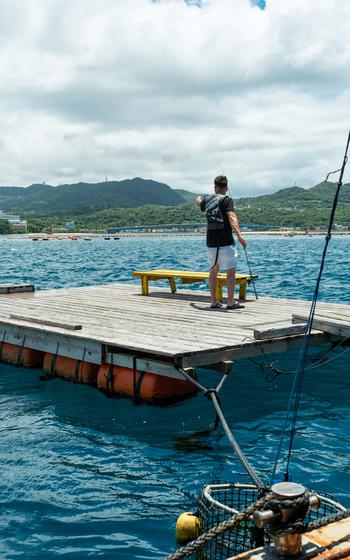
(Photo by Shoji Kudaka / Stripes Okinawa)
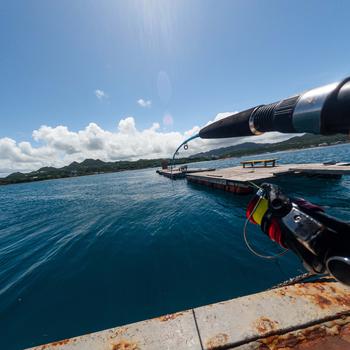
(Photo by Shoji Kudaka / Stripes Okinawa)
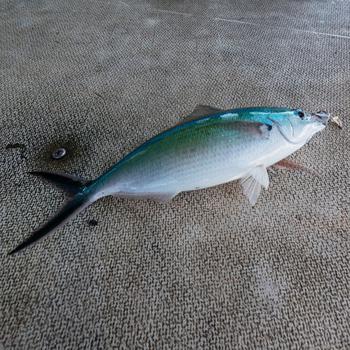
(Photo by Shoji Kudaka / Stripes Okinawa)
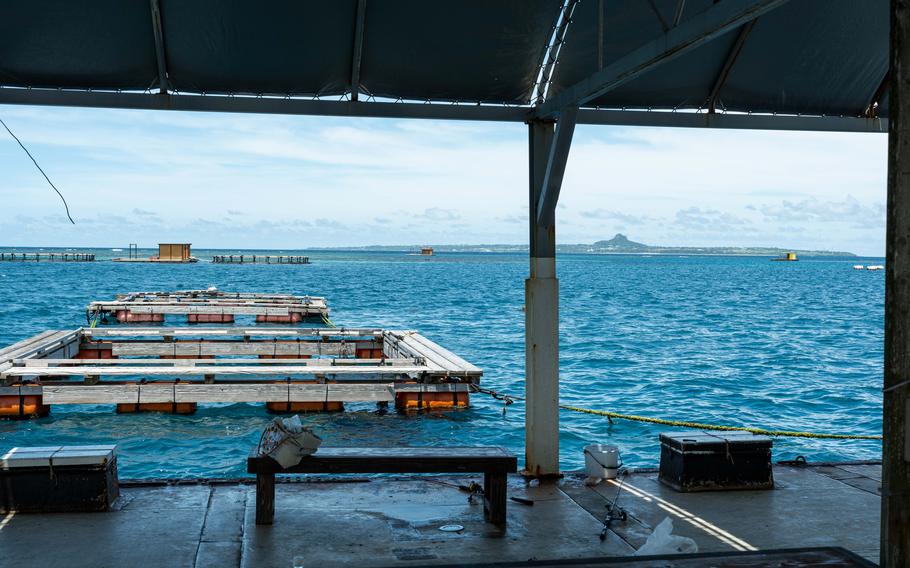
(Photo by Shoji Kudaka / Stripes Okinawa)
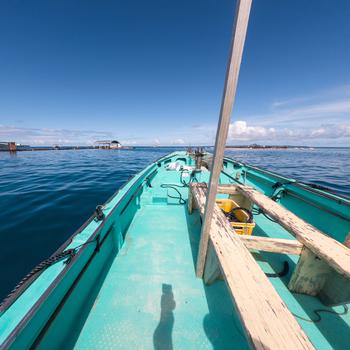
(Photo by Shoji Kudaka / Stripes Okinawa)
After releasing the line, he advised me to wait until the reel stops spinning, which indicates that the tip of the line has reached the bottom of the sea. Then, he said I should swing the rod up once to pull the tip of the line away from the bottom and wait for a bite.
I followed his instruction and cast the line looking for my first hit. Thanks to a roof that hung over the raft, I could wait in the shade. After several minutes and no pull, I reeled my line back up to find all of the bait on the hooks gone. I tried again, but the sneaky creatures below took the bait without a bite again.
My failure made me stubborn, and I kept trying. But I could not pick up the pace as I struggled with attaching the knoll to the hook. Frustrated with my clumsiness, I tried so hard that I even ended up cutting my thumb with the hook.
Thankfully, the captain stepped in and attached bait and cast line for me. With the skilled hand of the seasoned veteran, it looked very easy. He also noted that sometimes, I would need to change how deeply I cast the line depending upon where my target is. Doing so would take a lot of experience, of course, he said.
Once he felt a hit, he passed me the rod, so I could get a taste of the fun.
I reeled for about 30 seconds before the fish face glimmered in the emerald green water. The captain said it was a takasago fish. I was surprised at the color of the fish, since it is red when it’s sold at the supermarket.
Although it crossed my mind to bring home the catch for dinner, I put it in a net sack floating in the water by the raft to send it back to the sea.
I tried for three hours and that Takasago was the only catch I had. Others around me seemed to have no problem catching one after the other. It was disappointing to not catch anymore, but the beautiful ocean view and the cheers whenever others caught something did make me feel better about it.
Though I left with a cut on my thumb to show for my effort, it stopped bleeding by the time I got back on the boat back to the shore. It still hurt a little and I was exhausted by the hours of fishing, but I was glad that I tried this out.
The fishing raft would be a good starting point for fisherman of all levels. For beginners, it is a good way to fish in the middle of the ocean safely without worrying about getting seasickness. For the advanced angler, this is a good place to practice the casting depths to avoid getting your bait stolen like mine was. Why not try fishing on this raft and hone your skills?
Umiseikatsu (Marine Life)
GPS coordinates: 26.658728, 127.890294
Hours: 8:15 a.m. – 5 p.m.
*Boat departs from Toguchi Port to the fishing raft between 8:30 – 11:15 a.m. The returning boat from the raft runs between 1- 5 p.m. If you would like to return before noon, let the captain or the store know by 11:30 a.m.
Cost: Fishing raft tour costs 10,200 yen (approx. $70, subject to change), including fishing rod, line, bait, a lifejacket rental and round-trip boat ride.

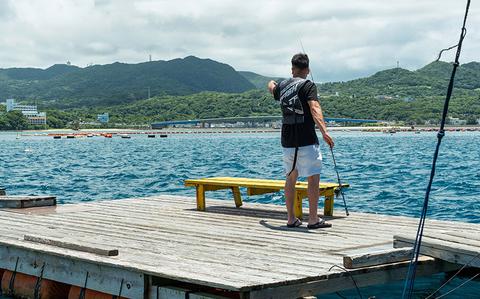
AloJapan.com